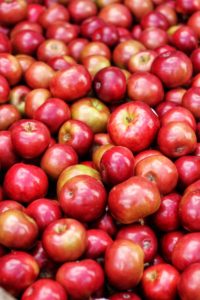Food Additive Loopholes
If you are an educated consumer, you will probably be reading the food labels of every item that you consume. Unfortunately this may not be enough, as there are some food additive loopholes that may allow some hidden nasties to end up on your plate.
What Are Food Additives?
Food additives are substances added to foods to improve the sensory experience in some way. They are also used to improve taste, flavour, shelf life, and appearance. And aid in the manufacturing processes.
They are widely used in processed foods. They include preservatives, flavours, flavour enhancers, colours, thickeners. Bulking agents, anticaking agents, humectants, nutritional supplements, sweeteners, stabilisers, emulsifiers, stabilisers, antioxidants, and curing agents.
Regulations and Loopholes in Australia
As a consumer, it is easy to assume that what you read on a food label is exactly what is in a food item. Unfortunately, this is not always the case.
The regulating body within Australia is the Food Standard Australia New Zealand body. There are quite a few discrepancies with this governing body. With health issues on the rise, consumers are becoming more educated on what they are eating. And the laws that regulate our food.
The biggest loophole of concern in Australia is the 5% loophole. In Australia if a compound ingredient is less than 5% of the total product. Additives and ingredients within that compound do not have to on the label, as long as they do not affect the final product.
A compound item is an ingredient made up of other ingredients, but listed as one ingredient.

According to the FSANZ, unpackaged foods do not require labeling. This could include for example unpackaged apples that have wax on the surface. Or grapes that have a chemical sprayed on them to make them shine. These chemicals are not required to be disclosed.
Another loophole is related to package size. If a food item has a package surface area of less than 100cm2, it is not required to state the ingredients.
Any chemical, or food additives that are used as a processing aid, and are ‘used up’ in the manufacturing process. Are not required to be labeled in the list of ingredients.
Elaine Gottschall discusses this at length in her book Breaking the Vicious Cycle, in regards to roasted nuts. She explains that dry roasted nuts are often dry roasted in corn flour, or other flours. But these ingredients do not have to be labeled on the ingredient list, as they are considered a manufacturing aid.
There are also other ways for companies to deceive consumers. MSG has become widely unpopular due to its known health implications. MSG is added to food to increase taste, and saliva production. This keeps us feeling hungrier for longer, and makes us consume more.
To disguise MSG, or other unpopular food additives. A company may mix it with other chemicals, to change and disguise the name.
If a consumer does have an issue with an ingredients lists. Than FSANZ has no formal process for responding to public complaints regarding labeling.
There is very little enforcement of the laws and regulations for our food items. There is also a lack of a country wide, governing body, who monitors food safety. Most regulating bodies are state wide, which makes it difficult to regulate foods items sold across multiple states.
If you are following a strict diet to heal your body, you will find it difficult to eat out. That is because fresh food made on site is not required to provide a full list of all ingredients used in their products to consumers .
A restaurant, or take away may be able to tell you if a product is dairy free, or gluten free. But if you are looking to avoid all chemical ingredients, it is almost impossible to find this information out. As they are not required to disclosure this information.
How to Avoid Food Additives

The best and most simple way to avoid food additives is to buy whole ingredients. And do the food processing at home. This way you can fully ensure what is added to each item that you eat.
If you are going to eat a packaged item, there are still steps you can take to ensure your safety. Specifically if you are going to consistently eat the same packaged food item. The best way to do this is to call the manufacturer and ask to be sent a full ingredient list. Explain that you have a serious digestive disorder that may be triggered by food additives.
If the company is not able, or willing to provide you with a full list of ingredients. I do not recommend that you consume that product.
Once you have established a ‘safe product’ stick to the same brand. Do not assume that each company will have the same ingredients. Or follow the same manufacturing processes.
Another way to limit food additives is to buy processed foods that only have one ingredient. Like almond butter, or green pea pasta. Although you still cannot 100% guarantee all food ingredients, and additives are listed. It does reduce the risk.
When you have a disease like IBD, it is so important that you know what you are eating. Misleading food labels, and loopholes in our regulations, can make this more difficult.
Educating yourself on the current regulations. And what exactly is in the food you are eating. Is the best way to ensure that you are only going to eat, whole, healthy foods.
